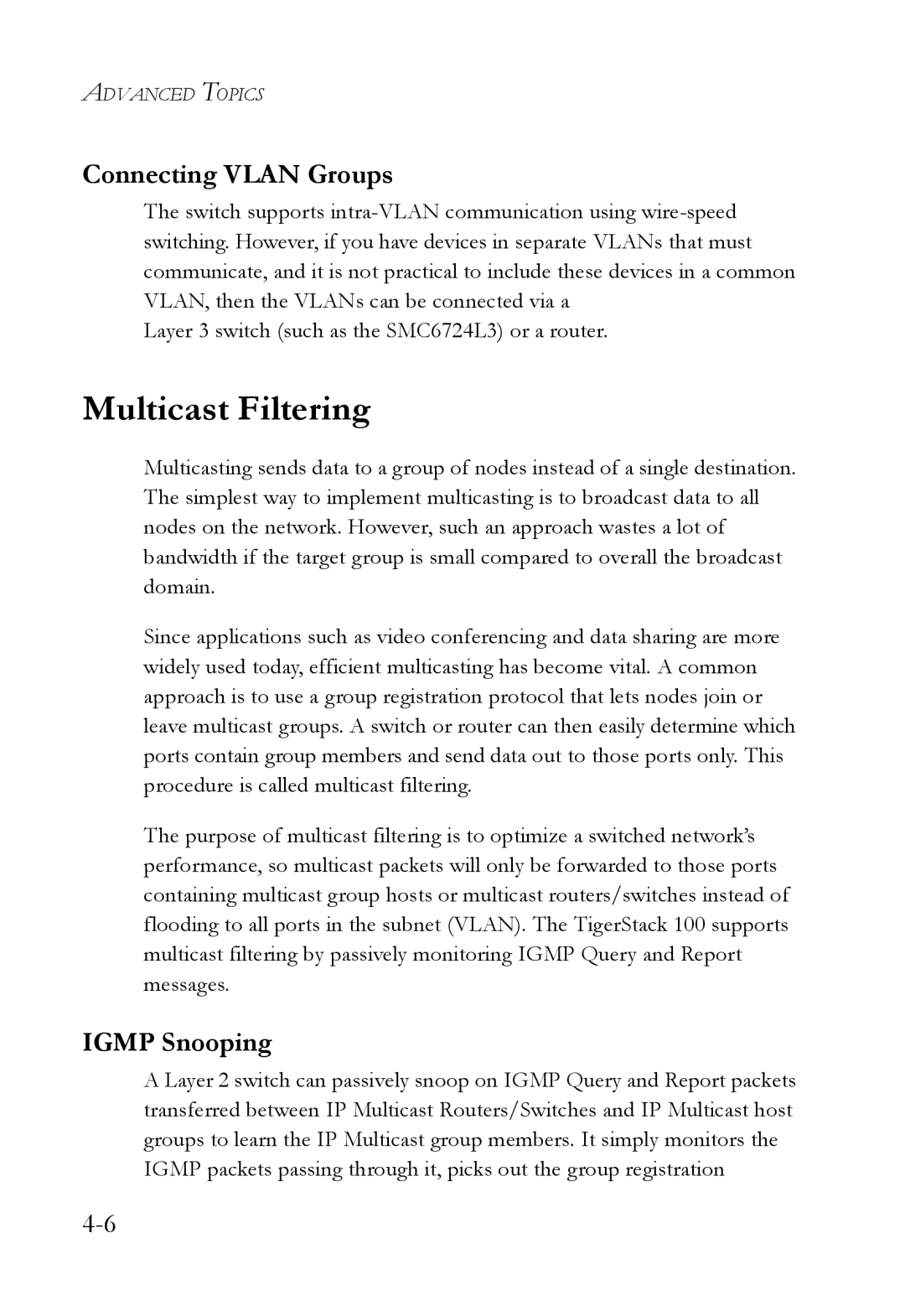ADVANCED TOPICS
Connecting VLAN Groups
The switch supports
Layer 3 switch (such as the SMC6724L3) or a router.
Multicast Filtering
Multicasting sends data to a group of nodes instead of a single destination. The simplest way to implement multicasting is to broadcast data to all nodes on the network. However, such an approach wastes a lot of bandwidth if the target group is small compared to overall the broadcast domain.
Since applications such as video conferencing and data sharing are more widely used today, efficient multicasting has become vital. A common approach is to use a group registration protocol that lets nodes join or leave multicast groups. A switch or router can then easily determine which ports contain group members and send data out to those ports only. This procedure is called multicast filtering.
The purpose of multicast filtering is to optimize a switched network’s performance, so multicast packets will only be forwarded to those ports containing multicast group hosts or multicast routers/switches instead of flooding to all ports in the subnet (VLAN). The TigerStack 100 supports multicast filtering by passively monitoring IGMP Query and Report messages.
IGMP Snooping
A Layer 2 switch can passively snoop on IGMP Query and Report packets transferred between IP Multicast Routers/Switches and IP Multicast host groups to learn the IP Multicast group members. It simply monitors the IGMP packets passing through it, picks out the group registration
